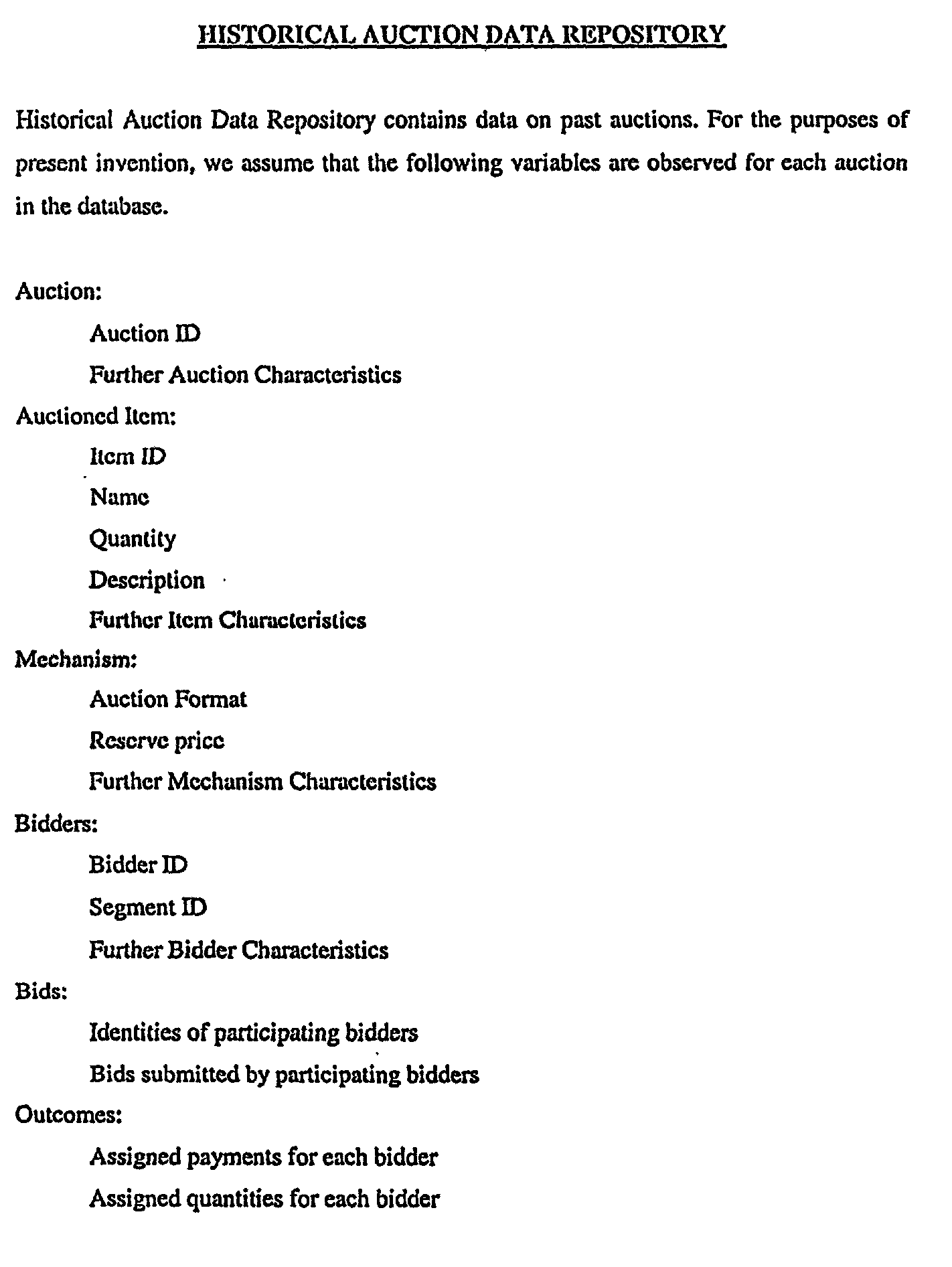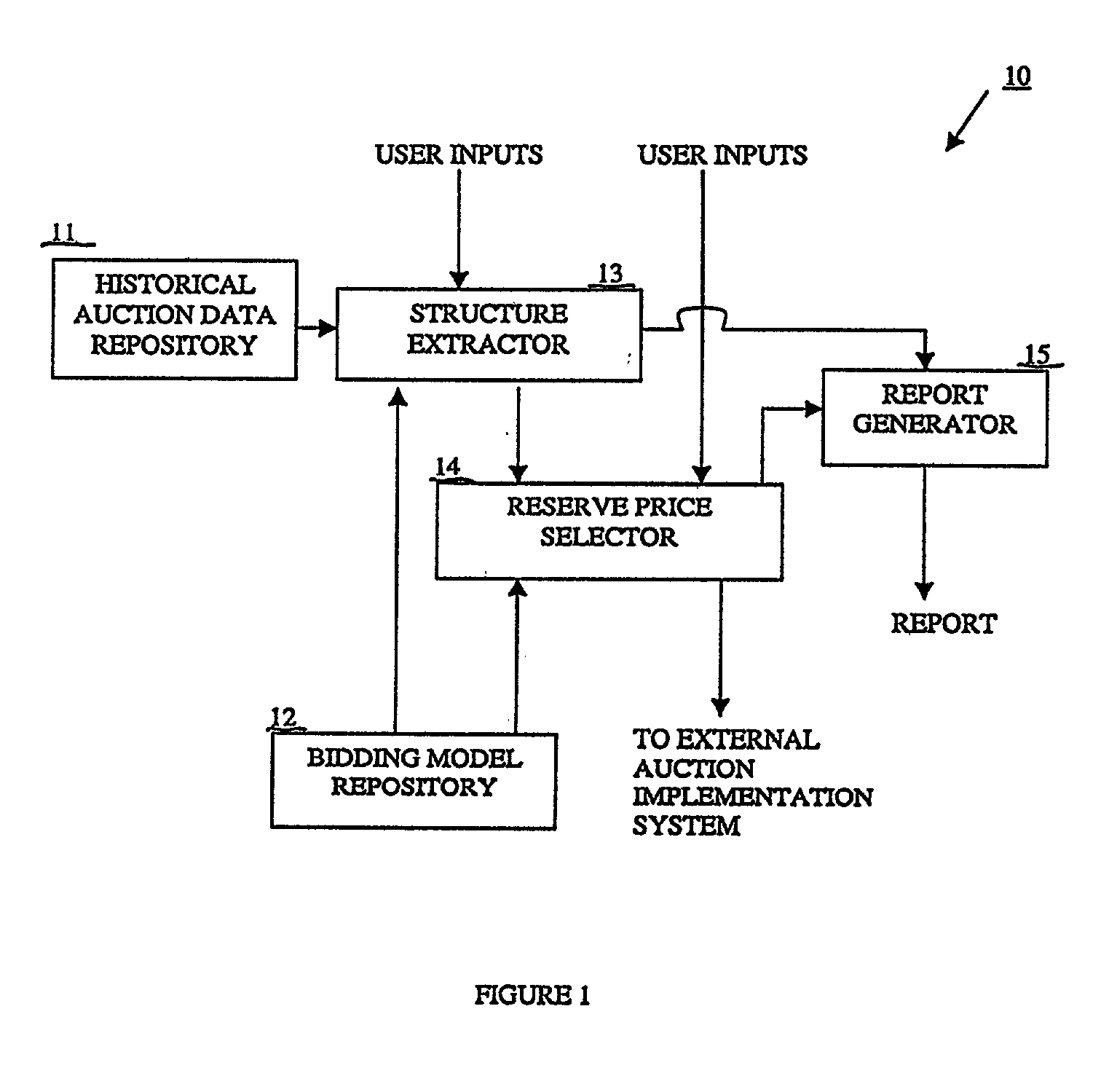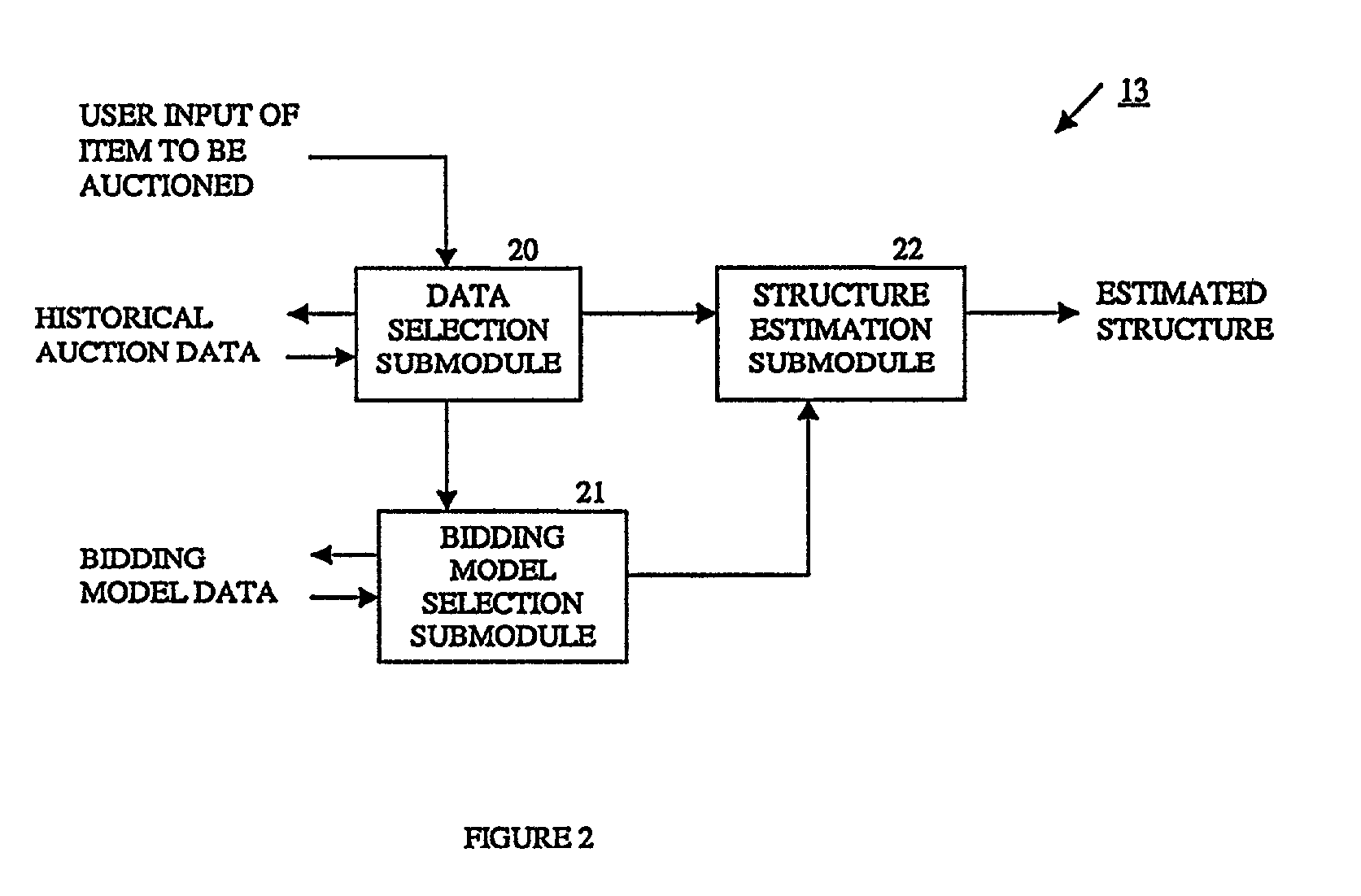Method and system for setting an optimal reserve price for an auction
a technology of optimal reserve price and auction, applied in the field of automatic design and analysis of auctions, can solve the problems of inherently unobservable, error-prone, and little systematic data analysis to guide these decisions
- Summary
- Abstract
- Description
- Claims
- Application Information
AI Technical Summary
Benefits of technology
Problems solved by technology
Method used
Image
Examples
example 1
[0070] A bidding model for Vickrey auction for the sale of an item
[0071] .beta..sub.j(V, {Format=Vickrey, Reserve Price=R}, [n, U( ), F(V.sub.1, . . . , V.sub.n)])=V for all bidders j. That is, regardless of the environment, each bidder submits a bid equal to his private valuation.
[0072] Example 2: A bidding model for sealed-bid first-price auction for the sale of an item with risk-neutral bidders:
[0073] .beta..sub.j(V, {Format=Sealed Bid First Price, Reserve Price=R}, [n, F(V.sub.1, . . . , V.sub.n)])=V-.intg..sub.r.sup.vL(a.vertline.V)da,
[0074] where L(a.vertline.V) is further expressed in terms of the joint distribution F(V.sub.1, . . . , V.sub.n). This expression is first described by P. Milgrom and R. Weber in 1982 in an article entitled "A Theory of Auctions and Competitive Bidding," published in Econometrica.
[0075] Example 3: A bidding model for Dutch auction is the same as the bidding model in Example 2 above.
[0076] The structure extractor 13 is used to estimate the unknown...
PUM
 Login to View More
Login to View More Abstract
Description
Claims
Application Information
 Login to View More
Login to View More - R&D
- Intellectual Property
- Life Sciences
- Materials
- Tech Scout
- Unparalleled Data Quality
- Higher Quality Content
- 60% Fewer Hallucinations
Browse by: Latest US Patents, China's latest patents, Technical Efficacy Thesaurus, Application Domain, Technology Topic, Popular Technical Reports.
© 2025 PatSnap. All rights reserved.Legal|Privacy policy|Modern Slavery Act Transparency Statement|Sitemap|About US| Contact US: help@patsnap.com



